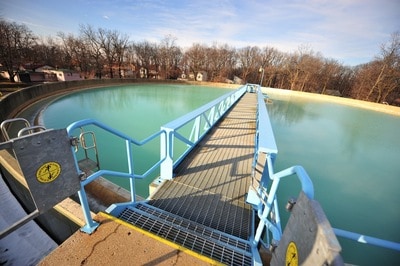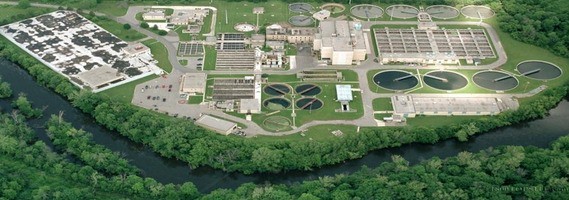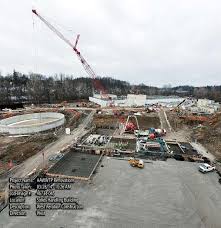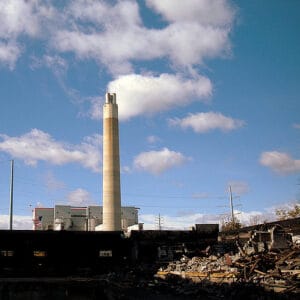Ann Arbor Wastewater Treatment Plant
Facilities Renovation Project
Renovation of the Ann Arbor Wastewater Treatment Plant Facilities was a large and complex long-term project. Work included replacing the 4800kV power distribution with 13.2kV, new generators, relocating DTE transmission lines, and upgrading the existing SCADA system. Our sister company, Motor City Electric Technologies, handled the low voltage installations. Work on the $20 million contract from Walsh Construction began in 2012 and was completed in late 2017.
The Ann Arbor Wastewater Treatment Plant consists of two plants, East and West. The East plant is more than 40 years old while the west plant is more than 80 years old. The two plants provide primary and secondary wastewater treatment while common facilities are utilized for preliminary treatment, retention and equalization, solids handling, tertiary treatment, chlorination, and dechlorination. Flow retention and equalization facility with a total capacity of approximately 17 million gallons per day enable the plant to process a steady flow of wastewater, regardless of how the flows into the plant may vary. The plant has a total design capacity of 29.5 million gallons per day.
The renovation project consisted of two phases:
Phase 1: Administration Building, Central Electrical Building, Flow Splitter Structure, Blower Building, Primary Building, Two Aeration Decks, Primary and Secondary Clarifiers, Sewage Lift Station, and Storm Water Pumping Station
Phase 2: Blower Building, Primary Building, Two Aeration Decks, Primary and Secondary Clarifiers, Raw Water Booster Stations, Maintenance Facility, and Tertiary Facility
What happens at a wastewater treatment plant?
Preliminary treatment involves first screening and raking the wastewater before it moves to tanks (clarifiers) where through the wonders of gravity the biosolids settle to the bottom since they are heavier than the liquids.
Secondary treatment is a little more complicated. The dissolved solids are removed by a biological process known as the activated sludge process before the wastewater moves to secondary clarifiers for another round of biosolid settling. The activated sludge process increases phosphorous removal and fine bubble diffusion in the aeration tanks to enhance the transfer of oxygen needed for secondary treatment.
Tertiary treatment is where things get really interesting. First, the wastewater moves through twelve sand filters. It is then disinfected through chlorination followed by dechlorination using sulfur dioxide. Only then is the treated water returned to the Huron River.
What the heck are biosolids?
These are the solid, semisolid, or liquid organic residues generated during the treatment of domestic sanitary sewage through controlled processes that reduce pathogens and attractiveness to flies, mosquitoes, rodents, etc.
What happens to all those biosolids removed from the wastewater?
Treatment of biosolids begins in three gravity thickeners. The next steps depend on the time of year. During non-winter months, lime is added to the biosolids to stabilize them. They can then be used as fertilizer in agricultural applications. During the winter months, the biosolids are dewatered in special presses that force them into cakes. The cakes, along with the screenings, grit, and scum removed from the wastewater, are disposed of in a landfill.

























